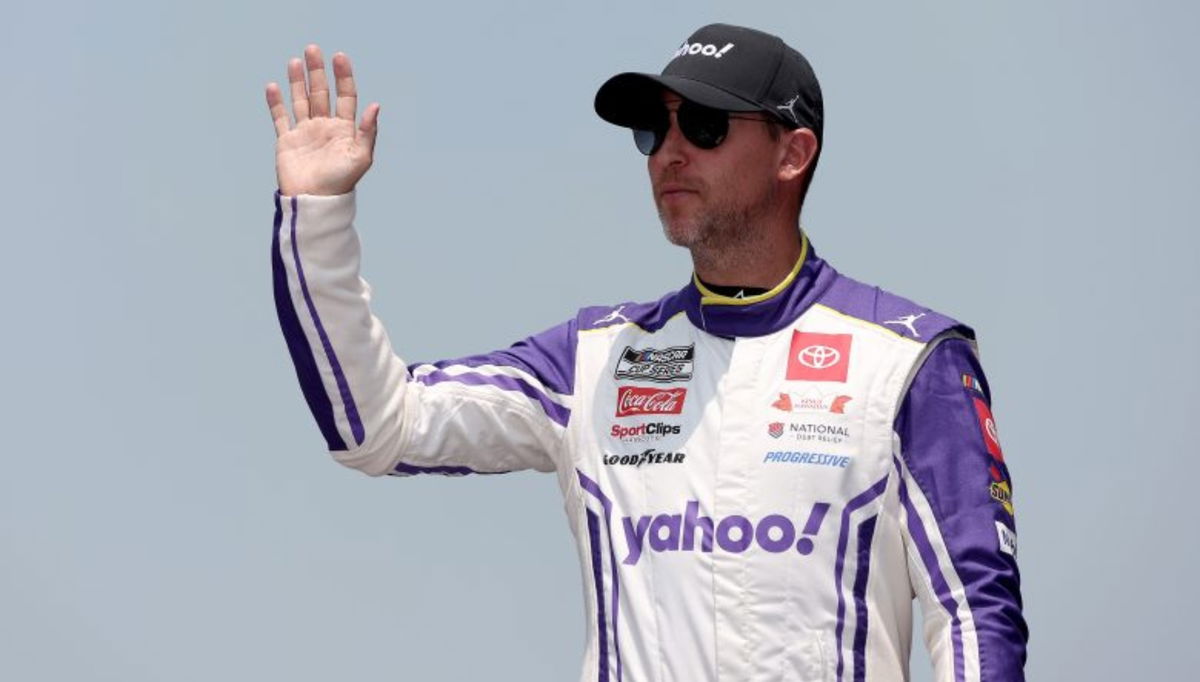
Imago
NASCAR.com

Imago
NASCAR.com
For much of 2025, Denny Hamlin stood out not just for his superspeedway prowess, but also for the sheer frustration he vented after February’s Daytona 500. In that race, a final-lap wreck crushed his hopes of a record-tying fourth win. William Byron came away victorious. Hamlin, eliminated in the chaos, did not hold back afterward. He called the event a “f—— crapshoot” and lamented that luck had overtaken driver skill. His comments sparked debate across NASCAR, with even the sport’s president defending the showpiece format. That bitterness set the stage for an unexpected twist following the summer Daytona race.
Watch What’s Trending Now!
The Daytona 500 rant carried weight because Hamlin is no stranger to the venue. With three wins, more than 600 laps led, and a dozen top-10 finishes, Hamlin ranks among the most accomplished active drivers at the track. When he said he “woke up pissed” and even questioned why drivers do not retire earlier, it signaled more than just disappointment. It suggested a growing unease about how NASCAR’s format affects its crown-jewel races. Yet five months later, at Daytona’s summer stop, everything had changed. The same driver pointed to details in the race’s structure as proof that superspeedway racing can still deliver.
ADVERTISEMENT
Denny Hamlin’s tale of two Daytonas
Speaking after the Coke Zero Sugar 400, Hamlin broke down why the August event produced a spectacle. He noted that the first stage, set at 35 laps, sat inside Daytona’s fuel window. That allowed the entire field to run all-out instead of conserving. This move, in turn, bred aggression. “Stage one was not a fuel mileage stage, so we were all able to go all-out for the entire stage,” Hamlin explained. That intensity led to the early wreck that trimmed the field. In Hamlin’s eyes, it laid the groundwork for competitive racing the rest of the night.
On his “Actions Detrimental” podcast, Hamlin contrasted that dynamic with what he saw in February. This was when 65-lap stages forced teams into fuel calculations. This time, cautions in Stage Two reset the window and added another layer of unpredictability. “What you witnessed was a race where fuel mileage didn’t play a huge factor, and that’s what made it good,” Hamlin said. He added that thinning the field to “about two-thirds of a full field is why you saw such competitive racing.” His tone could not have been more different from what it was five months earlier. Most people still remember him blasting the Daytona 500 for putting entertainment above merit.

Imago
July 20, 2025, Dover, De, USA: DENNY HAMLIN 11 of Chesterfield, VA gets introduced for the AutoTrader EchoPark Automotive 400 in Dover, DE. Dover USA – ZUMAa161 20250720_aaa_a161_044 Copyright: xWalterxG.xArcexSr.x
Denny Hamlin’s reversal raises broader questions. Do NASCAR’s stage design and fuel dynamics hold the key to balancing spectacle with competition? Hamlin’s praise in August showed how tweaks to race length and timing can change the product on track. For teams and fans alike, the debate over whether superspeedway racing rewards skill or chance is far from settled. It’s clear that drivers like Hamlin will continue to shape the conversation. Daytona’s twin events remain the crucible where those arguments burn hottest.
ADVERTISEMENT
ADVERTISEMENT
Hamlin frustrated with his superspeedway luck in Next Gen cars
Denny Hamlin has been one of the most successful superspeedway racers of his generation. The driver has accumulated crown jewel wins and has a reputation for sharp positioning. Yet, since the arrival of the Next Gen car in 2022, his fortune has flipped. Instead of contending up front, Hamlin has often found himself caught in the chaos he once avoided with ease.
Speaking on his podcast, Hamlin admitted his Daytona record has been “horrible” in the Next Gen era. He cited some random results like 28th, 33rd, 37th, and 38th. Hamlin said he often feels forced to hang back and wait for the “field to thin out,” only to still get caught in multi-car wrecks. The driver stressed he is rarely the cause, yet always seems to be “right in the middle of where it starts.”
This year’s Atlanta race was the lone exception where Hamlin conceded. He took partial blame for sparking an early crash. Beyond that, he argued his struggles highlight how little control drivers have. “Your luck in this car… it just drives me crazy,” he said, reflecting on the unpredictability compared to the Gen 6 era, where he could more consistently stay clear of danger due to better handling.
ADVERTISEMENT
As the playoffs near, Hamlin’s superspeedway misfortune looms large. Once viewed as a favorite at Daytona and Talladega, he now faces the challenge of surviving races that were once his strongest asset. For a driver chasing a long-elusive Cup championship, finding a way to flip that luck at the biggest drafting tracks could prove pivotal.
ADVERTISEMENT
ADVERTISEMENT
ADVERTISEMENT

